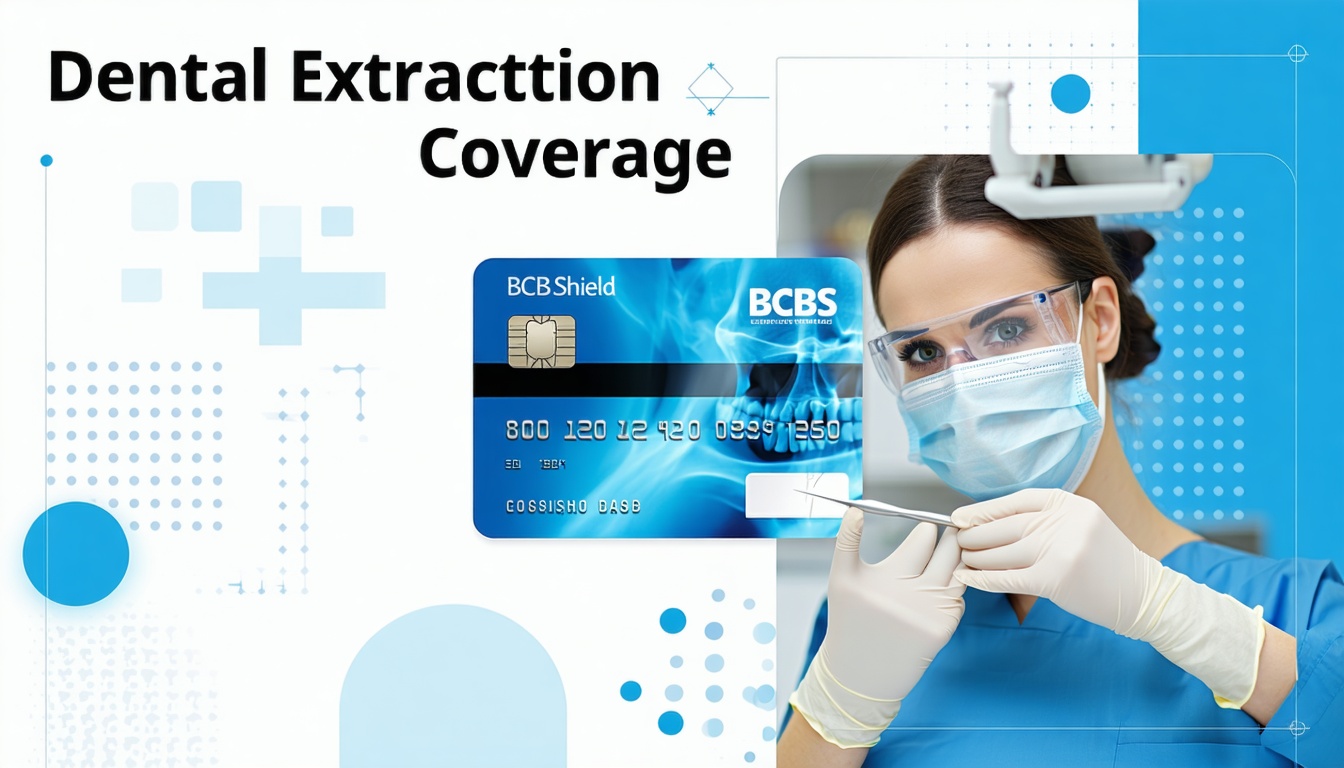
When you need an urgent tooth removal, understanding dental extraction coverage with BCBS helps you anticipate your out-of-pocket costs and focus on your relief instead of unexpected bills. We know sudden tooth pain or trauma can be stressful. In this guide, you’ll learn how Blue Cross Blue Shield dental plans handle extractions—from basic and surgical procedures to emergency scenarios, cost-sharing rules, and tips for smooth claims.
Many BCBS dental plans, such as the BCBS FEP Dental plan, include networks of over half a million in-network dentists nationwide, ensuring 99.9% of members have at least one provider within 15 miles of home (BCBS FEP Dental). While your specific plan details may vary by state and option, most operate on similar principles of network discounts, deductibles, coinsurance, and annual maximums.
Below you’ll find an overview of extraction coverage, service types, emergency benefits, pre-treatment estimates, provider options, cost factors, and actionable tips. Use these insights to make informed choices and get the care you need with BCBS insurance.
Understanding how your BCBS plan categorizes dental services is key to knowing what you’ll pay when you need an extraction.
BCBS dental coverage typically operates through a preferred provider organization (PPO) model. Key elements include:
Most Blue Cross Blue Shield plans divide services into three classes. Extractions generally fall under Class B or Class C depending on complexity.
| Service class | Examples |
|---|---|
| Preventive (Class A) | Exams, cleanings, sealants, X-rays |
| Basic (Class B) | Fillings, simple extractions, periodontal scaling |
| Major (Class C) | Surgical extractions, crowns, bridges |
Extractions labeled as “major” often carry higher coinsurance rates and may require prior authorization. Always review your benefit booklet for exact cost-share percentages under each class.
Knowing whether you need a simple or surgical removal affects both the clinical approach and your share of the charge.
A simple extraction involves removing a fully erupted tooth visible above the gum line.
A surgical extraction is needed when complications arise, such as an impacted tooth or fractured roots.
Your dentist will determine the type during an exam or imaging session and submit codes that reflect the complexity.
When severe pain, infection, or trauma strikes, BCBS plans often include provisions for urgent and medically necessary extractions.
You may qualify for emergency extraction coverage if you’re experiencing:
In these situations, BCBS typically treats the extraction as urgent care. For more on covered urgent services, see our article on dental emergencies covered by BCBS.
Under most BCBS plans, covered emergency services can include:
If your extraction is time-sensitive, verify whether your dentist can bill it as an emergency procedure to reduce delays and out-of-pocket risk. You can also explore urgent dental care with BCBS insurance for same-day appointment options.
Getting a clear picture of your costs before treatment can prevent surprises.
Certain extractions—especially surgical ones—may need prior authorization before BCBS approves coverage. Commonly authorized services include:
If you proceed without required authorization, you could be responsible for full charges even if the extraction is approved later.
Choosing an in-network dentist ensures you benefit from negotiated fees and smoother claims.
Most BCBS plans maintain extensive networks. For example, BCBS FEP Dental offers over 500,000 in-network providers, guaranteeing nearly all members a dentist within 15 miles (BCBS FEP Dental). To locate a provider:
For emergency-focused practices, see our list of BCBS dentists for dental emergencies.
Dental emergencies often strike outside normal office hours. Many practices offer:
Search for a weekend emergency dentist with BCBS or contact your dentist’s answering service to confirm BCBS acceptance and any additional fees.
Understanding your share of costs helps you budget for care.
Most dental plans cap benefits at a set dollar amount per year. Once you reach this limit, you pay 100% of additional expenses. Commonly, annual maximums range from $1,000 to $2,000, but check your plan summary for your exact limit and any rollover options.
Reduce administrative hurdles and ensure prompt payment.
If you need guidance on finding a provider that accepts your plan, see our resource on insurance-accepted emergency dental offices.
Coverage depends on service class, deductible status, coinsurance rate, and whether you use an in-network dentist. Simple extractions may be treated as basic services, while surgical extractions are often classified as major services with higher patient cost share.
You can see any licensed dentist, but expect higher deductibles, coinsurance, and possible balance billing. Compare out-of-network benefits to your in-network share before proceeding. For alternative plans that include broad coverage, visit insurance that covers tooth extractions.
BCBS typically processes dental claims within 30 days of receipt. If you haven’t heard back after 45 days, contact member services to confirm claim status and resolve any missing information.
By understanding how BCBS handles extractions—from service types and emergency coverage to cost-sharing rules and provider networks—you can make confident decisions when you need a tooth removed. Always refer to your specific plan documents, request a pre-treatment estimate, and choose an in-network dentist to maximize benefits and minimize surprises. If you have more questions, reach out to BCBS member services or your dental provider to get personalized assistance.


